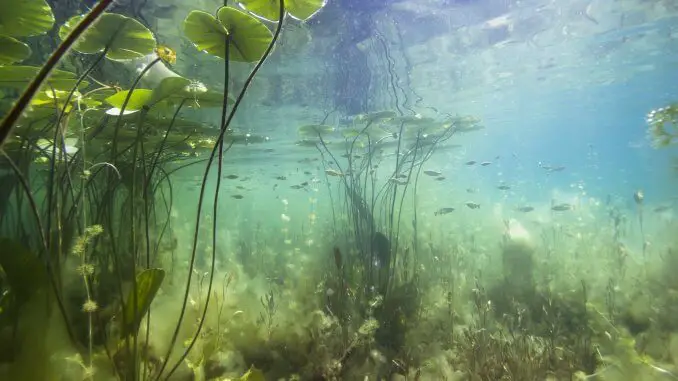
Plants are a vital part of all living ecosystems around the world – from rainforests and flowering meadows to the oceans and even your backyard pond.
They provide valuable services to your pond and are also a vital habitat for water-dwelling organisms like fish, frogs, and snails.
In this article, we will explore the best plant species for outdoor ponds, including species that are suitable for beginners, flowering species, floating species, those which are suitable for koi ponds, and many more.
For each species, we explain how to plant them, which different regions of the pond they should be occupying and how to propagate your own colonies.
Pond Plants for Beginners
Mosquito Fern
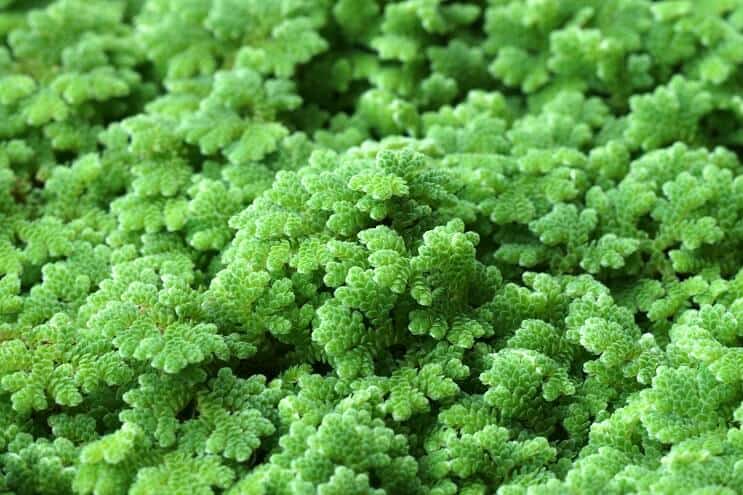
Mosquito Fern is surface-dwelling and gets its name from its ability to quickly cover the surface of the water which is thought to prevent mosquitos and other insects from laying eggs in the water.
This species is relatively small and grows to a length of around 1 inch, and has two rows of tiny leaves on either side of the stem.
It will continuously propagate and can double its size every 7-10 days. Because this grows extremely fast and requires little care, it can quickly cover the surface of a pond.
This can cause a reduction in dissolved oxygen in the water (which can be harmful to fish), so regular trimming is needed.
Creeping Jenny
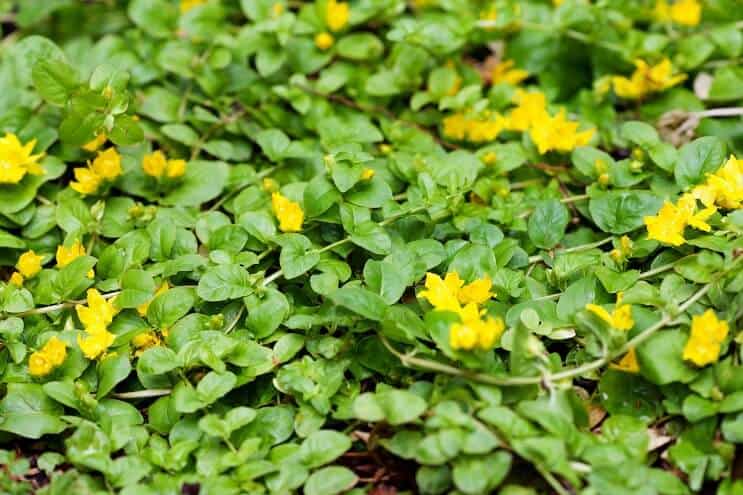
This species also goes by the name Moneywort because of its small, penny-sized succulent green leaves. These leaves branch from the main stem which can grow up to 12 inches tall.
It can also produce small white/yellow flowers (depending on the species) which will attract bees and butterflies to your garden.
Creeping Jenny should be used as a marginal plant as it prefers wet substrate or water up to two inches deep where it will provide shade for juvenile fish and cover for fry.
Propagating it is very simple. As it grows it will begin to produce white roots at the leaf nodes. When they reach a couple of inches in length you should cut the stem an inch below the root system and replant the cutting elsewhere.
Parrots Feather
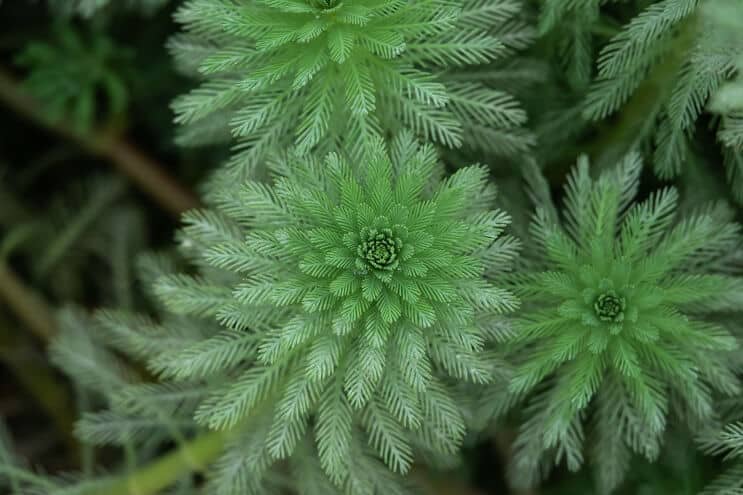
Parrots Feather has an underwater root system which can be either anchored into the substrate or can simply absorb nutrients from the water column.
This species gets its name from its small feather-like green leaves which branch from the stem. During the day, these leaves remain open to allow it to absorb the suns energy to photosynthesize. However, at night the leaves close together whilst they respire.
It is an invasive species due to its ability to rapidly grow breakaway stems and shoots causing it to out-compete native species.
This results in a lack of dissolved oxygen because the plant stops light from penetrating the waters surface leading to decreased photosynthesis by other species.
Pond Flowers
Blue Iris
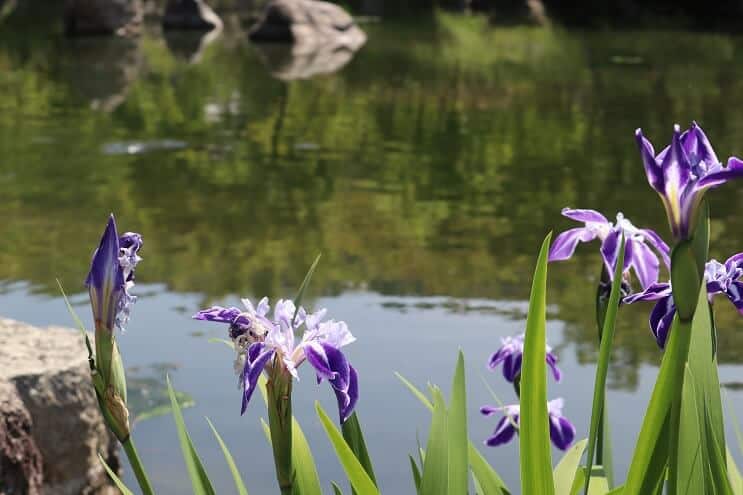
This Water Iris is a semi-aquatic/bog plant which grows best in shallow water that will cover their crown throughout the year. It can also be placed in wet soil around the border of the pond.
It will need to be repotted in both cases every couple of years to encourage growth.
In order for this species to grow its stunning flowers, a general water fertilizer or a slow release fertilizer rock will need to be provided. With the aid of these fertilizers, this species can grow up to 5 feet.
After planting, this species will not bloom its blueish purple and yellow flowers during the first season. Instead it will usually take a full year.
Sweet Flag
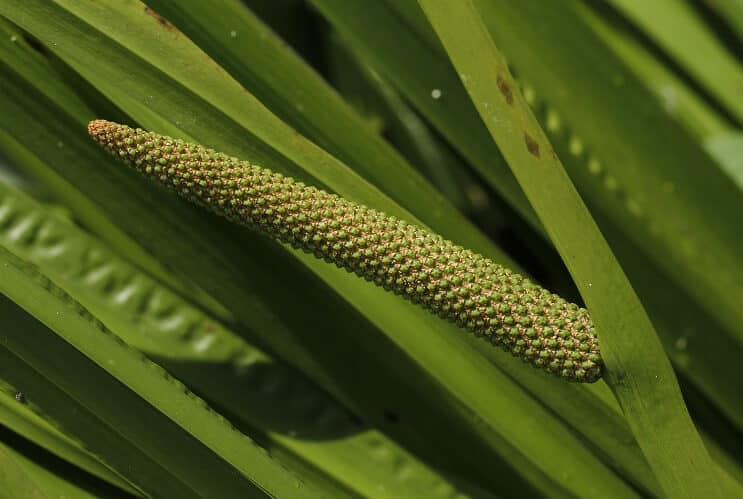
Sweet Flag is a perennial herb that grows up to 60 inches. Its leafy 3-edged stems are green at their base which slowly darkens towards the tip. Their leaves are sword-shaped and wavy along the edges.
This species can be placed on the border of ponds or in the margins. However, only plants that are grown in the margins of the water will produce these flowers.
They are self-propagating through the production of creeping roots that produce rhizomes that can be cut and placed elsewhere or allowed to grow freely.
Pickerel
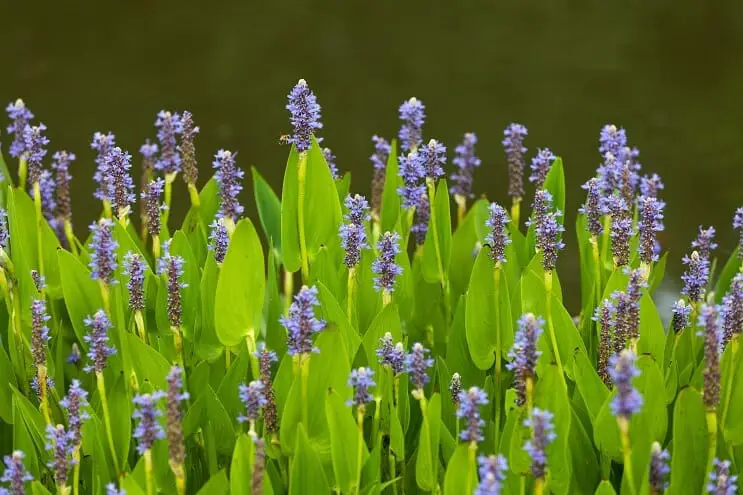
Pickerel is a marginal aquatic perennial species that grows to a height of 4 feet. It has spearhead-looking leaves that are bright green and grow to 7 inches in length.
It usually blooms its flowers in the late summer/early fall. The flowers are small and tubular with a deep blue coloration.
They should be planted in baskets with a mix of fertile clay, sand, and humus along the shallow pond margins with full sunlight.
Koi Pond Plants
Water Smartweed
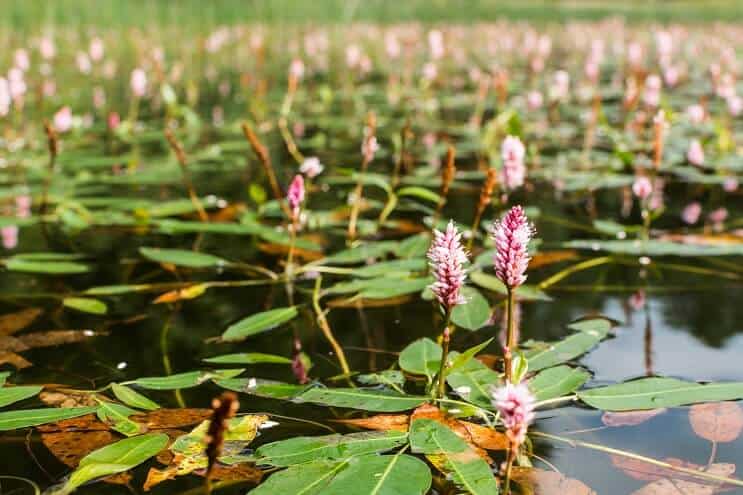
Water Smartweed should be planted in muddy substrates in shallow water regions of your Koi pond where it can absorb essential nutrients. Alternatively, it can float on the surface which will provide vital shade for your Koi.
It has a thick stem from which alternate dagger-like leaves protrude, and at the head of the stem, there are a cluster of bright pink flowers.
Propagation of Water Smartweed occurs when the flowers produce a flattened oval-shaped dark seed which can be collected and potted until shoots and leaves are produced. At this point they can be planted in soil along the margins of the pond where the Koi cannot access them and uproot them.
Water Lotus
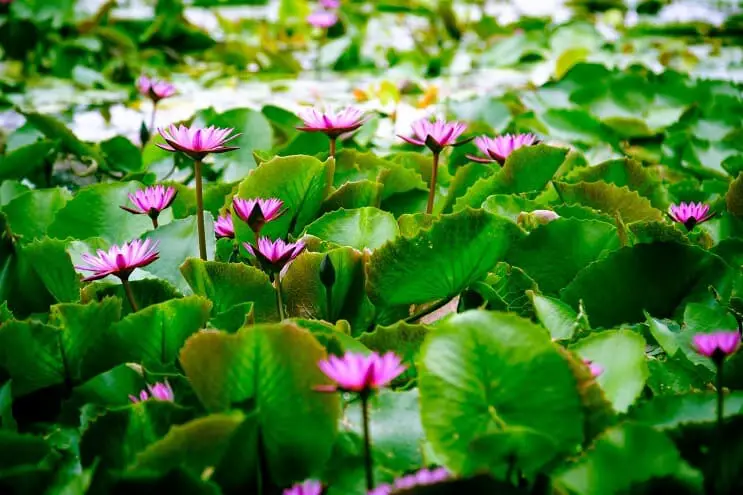
Depending on the species, Water Lotus can come in an array of sizes, varying in height from 18-60 inches. The smaller lotus species can reach a height of 12 inches with leaves 2-3 inches in diameter.
They also produce stunning flowers which vary in color and make a great addition for anyone looking to start water gardening.
This plant should be placed in a pot on a shelf within the pond.
The pot will prevent the Koi from uprooting it and special nets can also be bought to protect the plant from these fish.
Water Clover
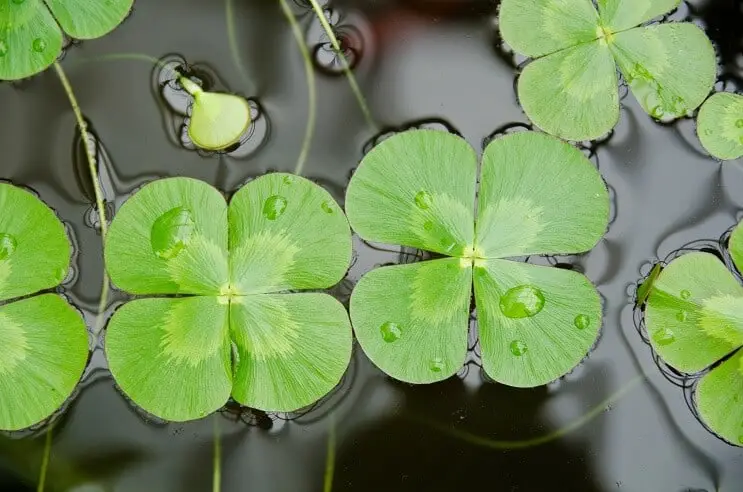
This species floats on the surface or can be submerged where they look similar in appearance to the lucky four-leaf clover.
The Water Clover produces rhizomes that spread through the substrate along the edge of the pond in sunny areas. These rhizomes can be cut and replanted in different locations.
This plant will provide shade for your Koi and shelter them from the heat, whilst also providing additional filtration to your water.
Most Hardy Pond Plants
Hornwort
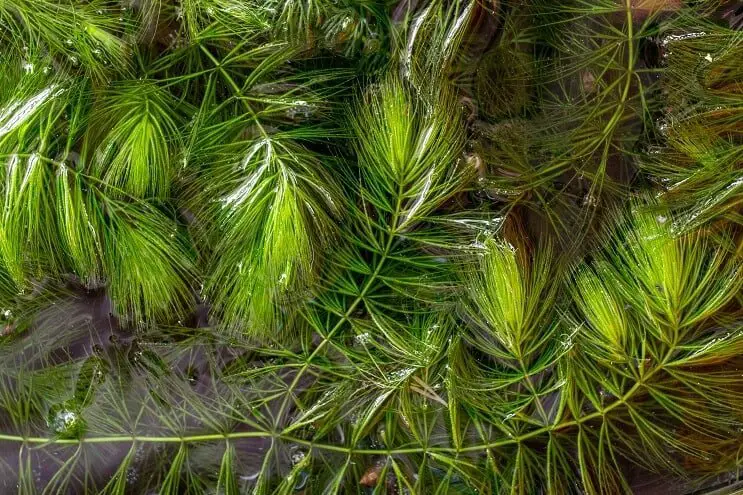
Hornwort can not only be a floating plant but can also be anchored within the substrate. It just depends on the type of look you want within your pond.
Adding it to the pond as a floating species will not only provide shelter, but it will also provide shade and help combat unwanted algae growth.
Hornwort has a long green stem with branches every inch or so which lead into thin but darker green needle-like leaves.
It can be easily propagated through asexual reproduction via side shoots depending on the amount of light and nutrients (which can be added) and it should be kept in a pond with a stable pH of 6.0-7.5 and a temperature of 59-86°F.
Horsetail Reed
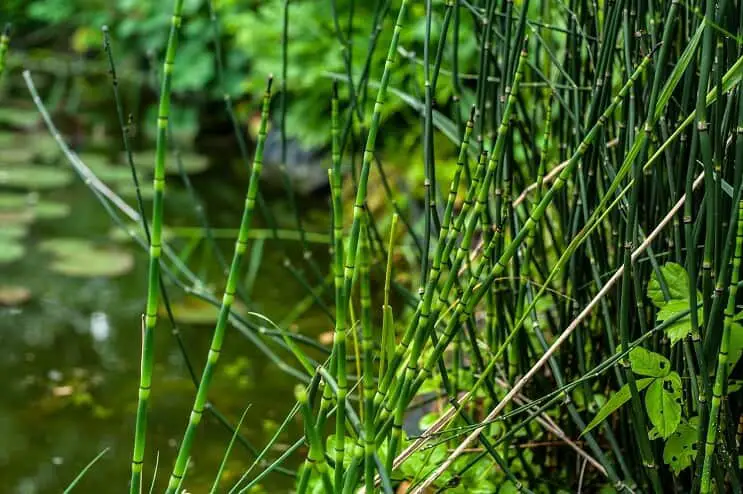
Horsetail Reeds should be planted in the substrate or potted and placed in the margins of the pond where there is plenty of light and room to grow.
The stem can grow up to 180cm tall and have tiny leaves fused to them which are very difficult to spot. It can be propagated by taking cuttings from the stem.
On the stem there will be dark rings called nodes. Cut the stems around an inch on either side of these nodes. Submerge these cuttings in water and from the nodes will sprout both a new stem and a root system. When this occurs, they can be repotted and submerged once again.
Water Soldier
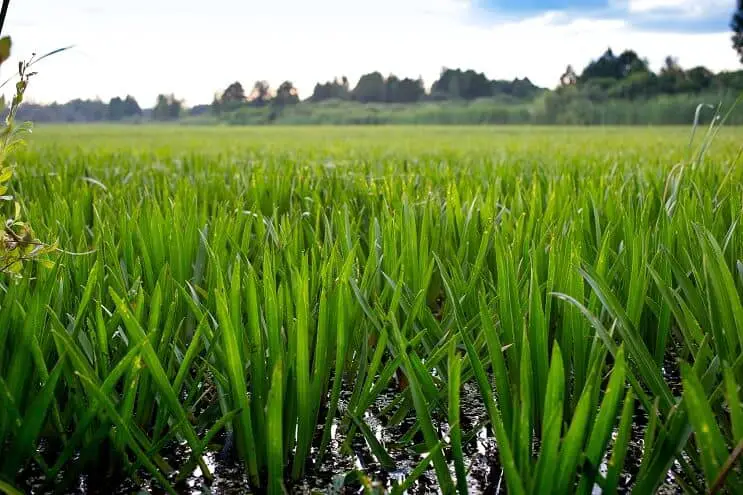
This perennial plant is made up of serrated leaves which look like the top of a pineapple. Males produce clusters of small white flowers whereas females only produce a single flower.
It does well in both sunny and shaded areas along the pond’s margins. During the summer months, it floats on the water’s surface and the leaves protrude from the water.
During the colder periods, it gets covered with a layer of slimy calcium carbonate and the plant then sinks back down to the bottom of the pond.
Floating Pond Plants
Floating Watermoss
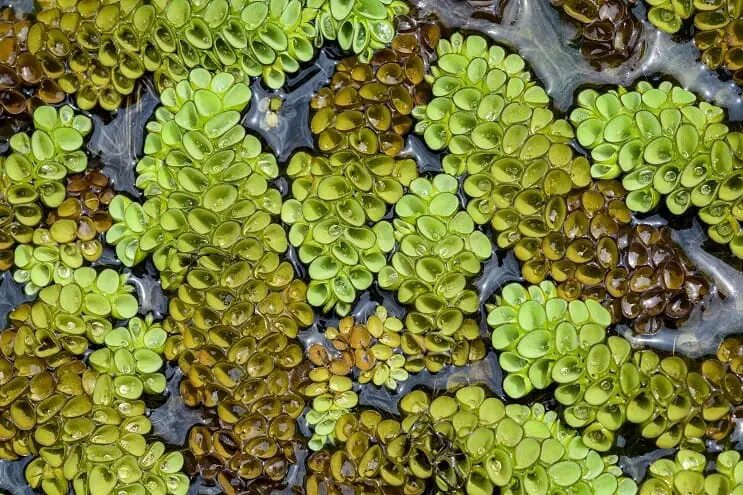
Contrary to its name, Floating Watermoss is actually a floating aquatic fern. It is comprised of three leaves, two of which float on the surface of the water because they contain small pockets of air.
The third leaf is actually submerged beneath the surface and operates as the root system by absorbing nutrients from the water.
Floating Watermoss should be kept in a heated pond and placed in a sheltered area with direct sunlight. It is not a very hardy plant and should be removed from the pond during the colder months.
Waterlilies
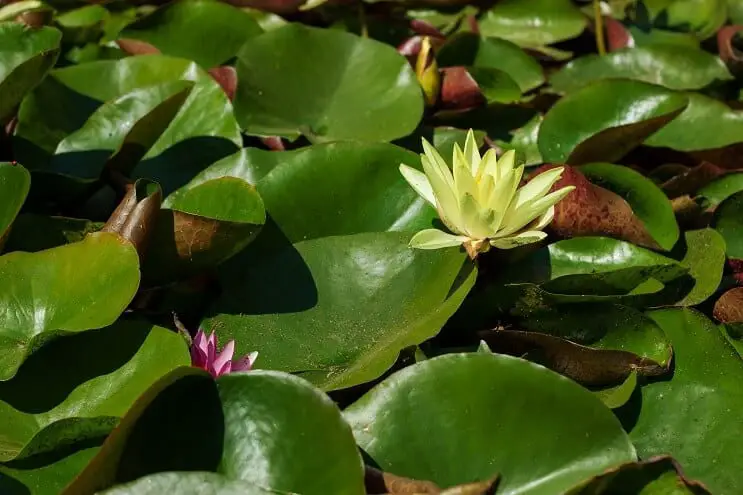
Waterlilies are one of the most popular floating pond plants.
Their different colored flowers have certainly helped their popularity. The leaves provide essential cover for your fish and shade them from the heat during the summer.
To propagate this species, you should separate shoots and their root systems from the main pot and replant them into a separate basket before re-submerging them.
Water Chestnut
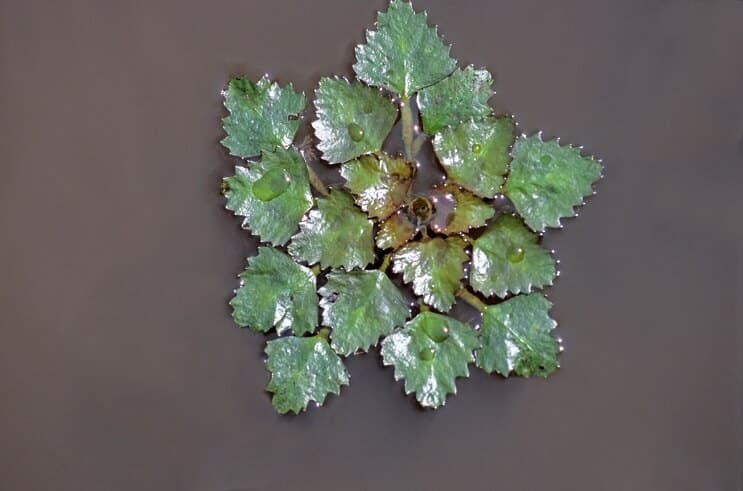
Water Chestnuts should be placed in the marginal substrate of the pond. From there, shoots will form and work their way to the surface of the water. It is here that floating, ridged diamond-shaped leaves will form.
As with all floating species, Water Chestnut blocks light from the sun which helps prevent algae growth and provides shelter for small water creatures and their young.
Propagation of Water Chestnut occurs when the plant produces small vegetables which sink to the water substrate and begin the cycle all over again. These vegetables are also used in Chinese cuisine dishes around the world.
Fast Growing Pond Plants
Frogbit
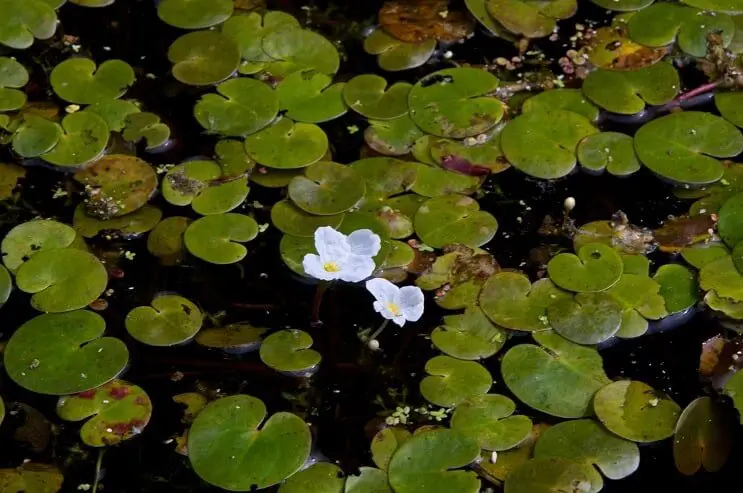
Frogbit is similar in appearance to Water Lilies, but they are smaller in size. The leaves form rosettes which surround a white flower which blooms during July and August.
The leaves also sit on the surface of ponds, providing shelter for any water-dwelling organisms in your pond.
It should be planted just like Water Lilies, in a pot with the substrate, in the shallow regions of your pond.
Because of Frogbit’s ability to tolerate a wide range of water parameters and its fast growth rate, it has actually become an invasive species in the great lakes of North America and even Canada.
Duckweed
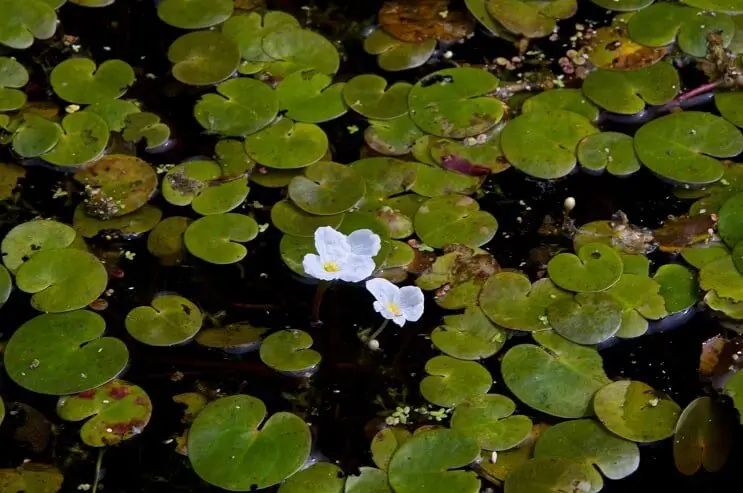
Duckweed is a small species of floating plant and is often found in large masses in lakes, ponds, and rivers.
They are probably the easiest species to keep as the only things they require are nutrients within the water body and light. When they have both of these, a few individuals can quickly turn into many as they are asexual and multiply readily through a process called vegetative reproduction.
These plants aid in water filtration by absorbing excess nutrients and harmful elements. The roots will also provide a safe place for the juvenile fry of fish like guppies to hide amongst.
Easy Maintenance Pond Plants
Corkscrew Rush
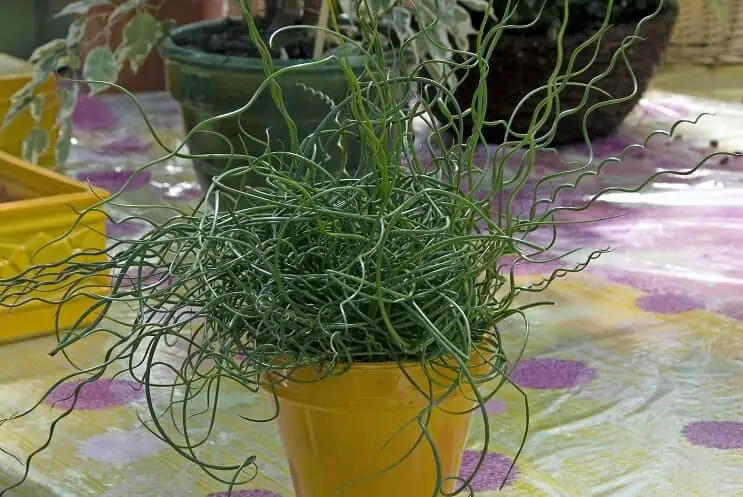
This species is an evergreen perennial species which forms clusters of corkscrew-like, leafless stems.
Every now and then, it will produce small clumps of brown flowers during the summer months.
Corkscrew Rush can be planted in any type of substrate along the border of the pond where their root systems can be kept moist enough for healthy growth.
It will give a very natural look to your pond whilst also providing a suitable habitat for any creatures occupying the region around the pond’s borders.
This is easily propagated via the separation of its rhizomes which can be replanted.
Water Lettuce
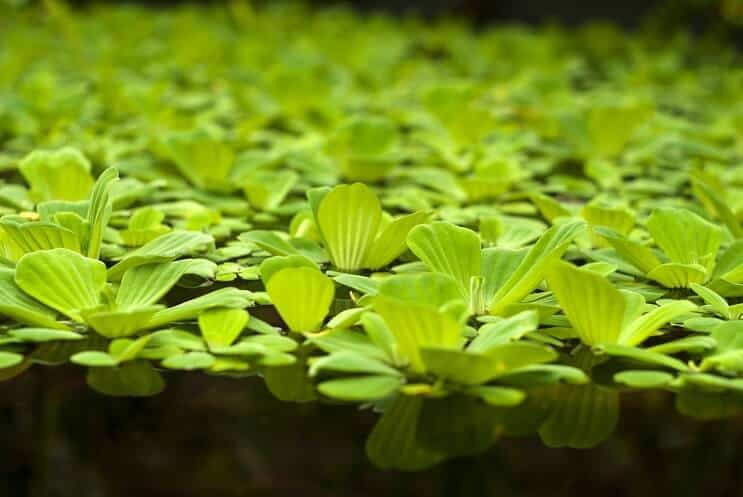
The Water Lettuce, also known as the Water Cabbage is a green floating plant that looks like the vegetables after which it is named.
It has thick but soft leaves which give it the look of opening lettuce or cabbage.
This plant is found in tropical freshwater bodies of South America, Africa, and South East Asia through to Indonesia. They are considered an invasive species due to the fact they can populate almost all tropical freshwater bodies.
They are very easy to care for and provide you have a decent amount of light and add fertilizers to the water, it will reproduce in no time.
Water Hyacinth
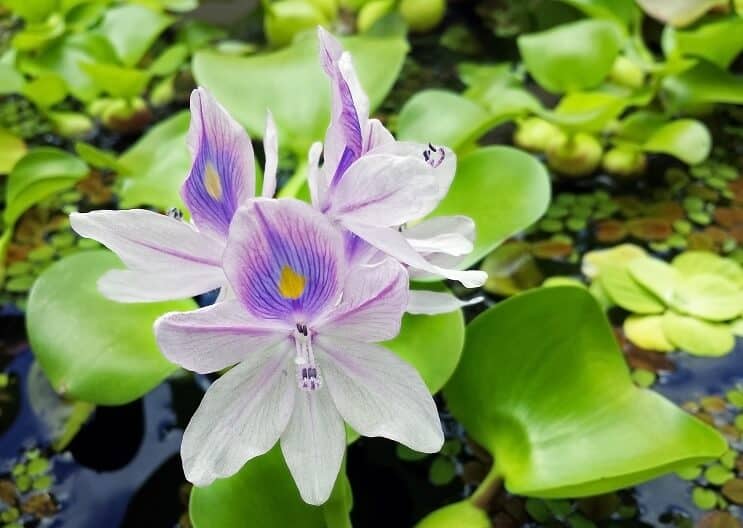
Water Hyacinth is an aquatic plant native to South America. In the Southern United States, it is classified as an aggressive invasive species which inhabits ponds and slow-flowing water bodies.
This is a floating species that grows quickly in direct sunlight. Its large green leaves float on the surface of the water and have an erect stem that sports beautiful purple and blue flowers with a yellow center.
Beneath the water, the dark black roots can reach a length of up to 12 inches providing an ideal habitat for the fry of fish like platy fish to hide amongst.
Summary
Plants can occupy a variety of different regions within your pond, from being fully submersed within the water to free-floating at the surface.
Some prefer shallow water and others prefer deeper water which gives them more room to grow.
The species discussed throughout this article also have different functions within the pond’s ecosystem. They can provide additional filtration, as well as give fish shade from the sun, shelter from predation, and a place for them to lay their eggs.
They also absorb excess nutrients from the water which would otherwise be consumed by unwanted algae, resulting in green water rather than a crystal-clear pond. Algae-consuming fish like Siamese algae eaters can also help control algae within your pond.
What is your favorite aquatic plant? Let us know in the comments section below…

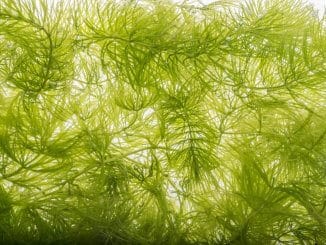
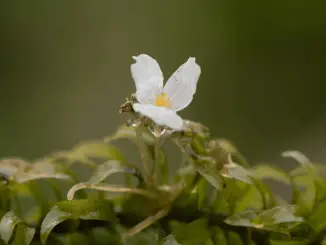
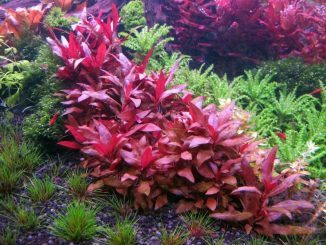
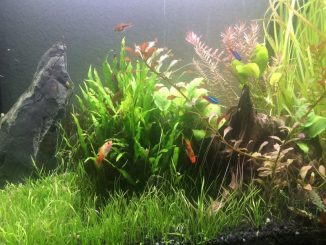
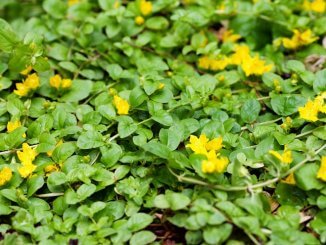
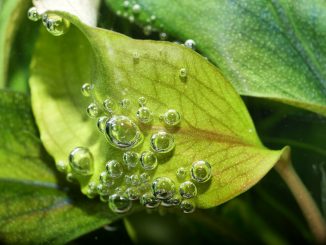
When can you ship pond plants to Salt lake city, Utah
and a price list for the plants